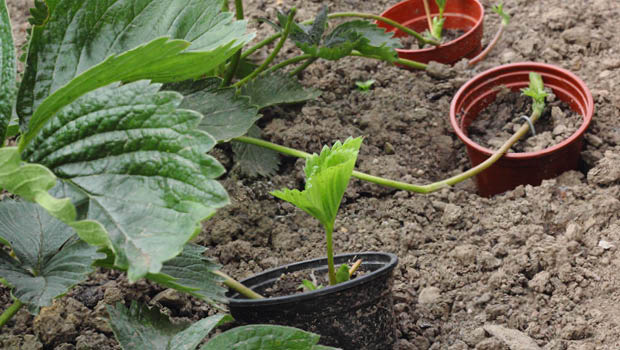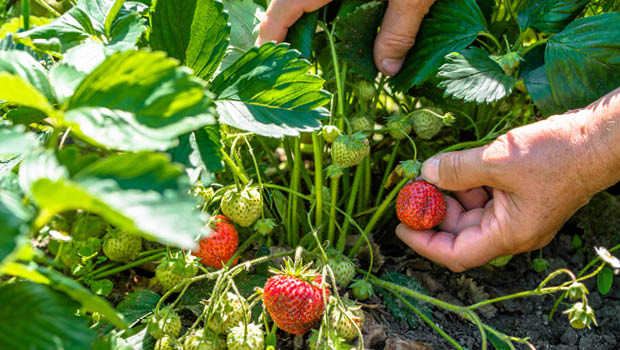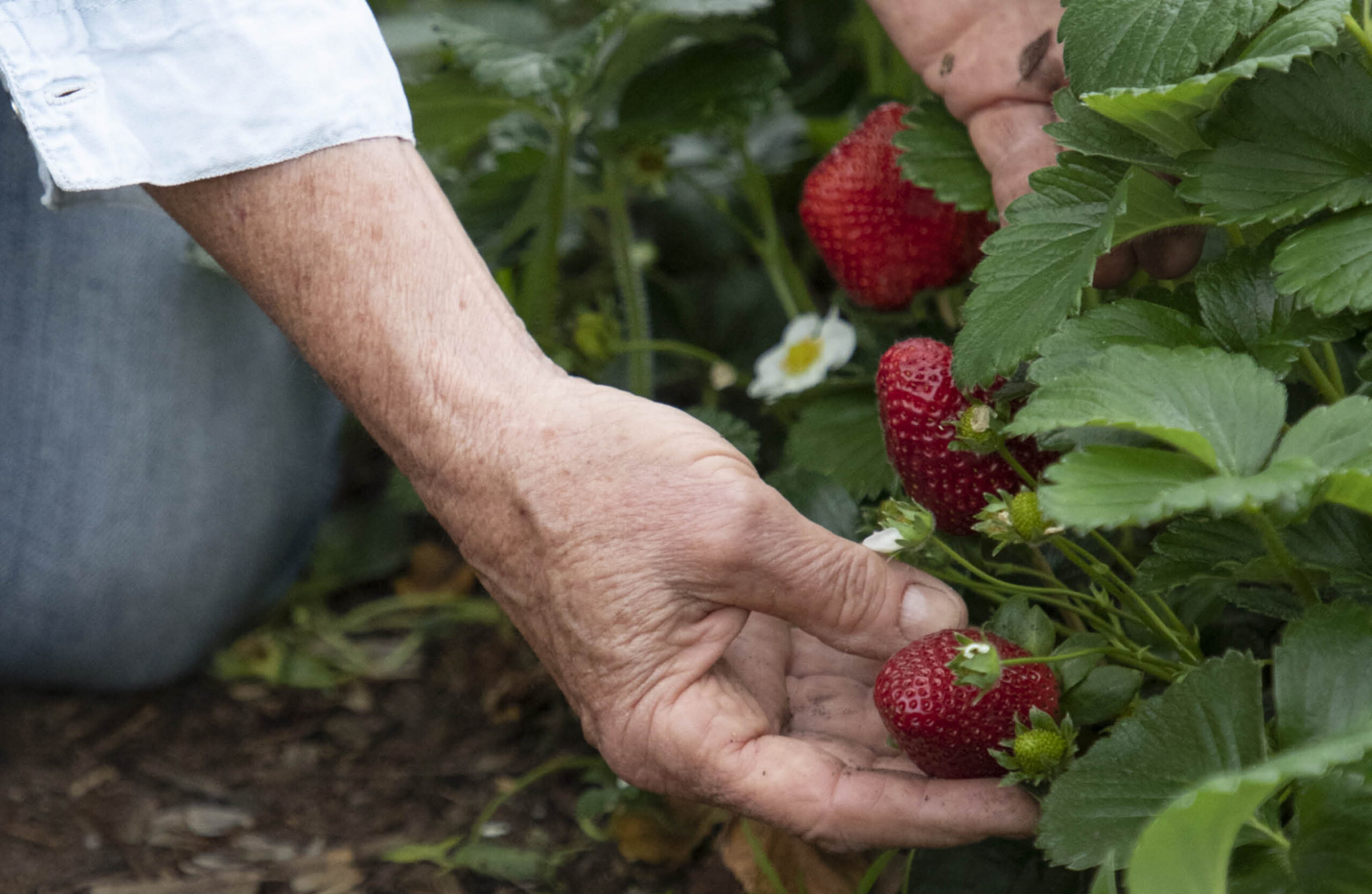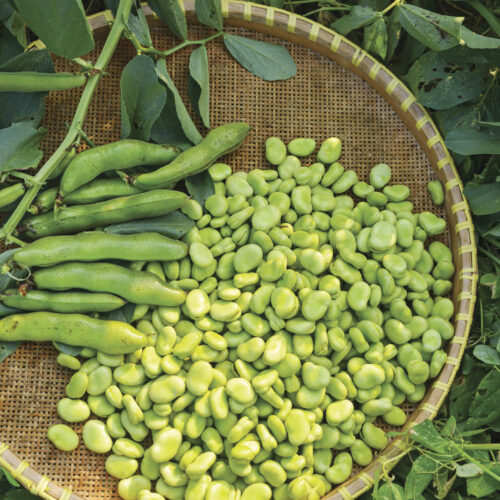Strawberry growing success
2020-10-14T06:54:01+11:00
Discover the secret to growing full-flavoured and productive strawberries – whether in beds, baskets or pots.
It’s hard to think of a more enticing dessert than a bowl of fresh strawberries. Unfortunately, they lose their appeal when mass grown, sprayed with pesticides, stored for too long and purchased from a supermarket – hard, flavourless, unscented and too big! Fortunately, they can be grown at home, fit into small spaces, and are perfect for pots, hanging baskets and green walls.
Ancient Romans first grew strawberries (Fragaria species) calling them fraga. These were spreading wild strawberries with small fragrant fruit, botanically known as F. vesca and F. elatior. Mostly, though, they were wild-harvested from the cool European forests where they grew.
The first known breeding that led to the modern strawberry was in the 1700s when the American strawberry F. virginianum was crossed with the very large Chilean strawberry F. chiloenisis. Using a few of the more than 15 different species of strawberries, more crossing and breeding followed, and eventually in the 19th century the cultivated strawberry F. x ananassa was produced.
Since then, nurserymen and researchers have continued to develop new strains of strawberries. In the 1950s and ’60s in Australia, viruses made commercial strawberry growing unviable until virus-free strains were imported, some of which have found their way to plant nurseries and our gardens.
Position and preparation
Planting times vary depending on where you live. In Queensland, strawberries are generally planted March–early April; NSW, WA and SA, late March to late May (some places to June); Vic and Tas, May to late July.
Choose a sunny, open position with good airflow. Morning sun only is best, with protection from the hot summer-afternoon sun. Whether you’re growing in the ground or in pots or hanging baskets, good soil preparation is essential.
Make sure your soil is well-drained, if not, then raise the bed or plant into a mound, or grow them in a pot. Plants will succumb to fungal diseases if they stay wet for any length of time. In cold regions protect from frost.
Strawberries need slightly acidic soil or potting mix: pH of 6–6.5. For alkaline soils, add sulphur and organic matter, especially composted leaves such as pine or oak. Also add some well-aged cow, sheep or horse manure, more for the organic matter than for the nutrients or pH. Don’t use mushroom compost or chook manure as it tends to be alkaline.
I also add my own compost and worm castings, and a couple of handfuls of rock dust for trace elements. This will create a perfect deep, humus-rich soil, and if you can prepare it all a few weeks in advance, that’s even better. Don’t use too much high-nitrogen fertiliser or you’ll have lovely lush leaves but very little fruit.
Cultivar choice
Make sure you choose the right cultivar for your climate and your needs. Some strawberries have heavy flushes of fruit over a short period, these tend to be the older cultivars, while the newer ‘day neutral’ cultivars will fruit from spring to autumn in temperate regions. In warmer regions some will start fruiting in winter, and some are more tolerant of shorter days and a bit more heat. See the table at right for suggestions.
It’s also possible to grow your own new plants by dividing a clump (also known as a crown) or by detaching runners from existing plants and replanting. Wild and alpine strawberries are easily grown from seed (see box on page 31). Unlike many other plants, the best strawberry crop comes in the first two years of growth, after that the harvest declines. So divide clumps or detach and replant runners into new soil every couple of years, this prevents the buildup of diseases.
Strawberries can also be badly affected by viruses. If they start to look tired and don’t produce well, have mottled or speckled leaves or fruit start to grow strange grey protuberances, then this will be a virus. There’s nothing you can do to fix this. Just pull the plants out and purchase fresh virus-free runners or plants.

Planting
When planting runners, make a mound in the planting hole and spread the roots over the mound, then backfill with soil and firm around the plant. Whether planting runners or pots, make sure the crown (top of the roots) is at soil level, no deeper: otherwise the crown may rot. If too shallow the whole plant may dry out. Place plants 30cm apart in rows 30cm apart. Water well with diluted seaweed extract and mulch the whole bed with lucerne hay or pea straw. Mulching keeps plants weed free, protects from frost and stops fruit sitting on the soil, reducing fungal disease risk.
Hanging baskets
My preference with hanging baskets is to use easy maintenance, solid pots with a water reservoir at the base. They come in a range of sizes and colours. However, I love the look of wicker and wire baskets (the latter lined with coconut fibre), but they are harder to keep well-watered. If you use the wire baskets, ensure you can easily lift them down to soak in a large container of water. Whatever hanging basket you use, fill with top-quality potting mix, and mulch after planting. A 25cm hanging basket will work for one plant.
Care
Strawberries don’t like water sitting on their leaves, stems or fruit, so if you are growing a big patch, put in drip irrigation. If it’s only a small clump or in a raised bed or pots, water by targeting the soil and roots, rather than the crown and leaves.
About four weeks after planting, water with a weak complete liquid fertiliser, either manure, compost or worm tea, or an organic commercial product. Once flowers start to appear, water with a dilute seaweed extract. Longer-bearing types also need top dressing with a complete organic pelletised fertiliser or blood and bone, midway through the season. Remove any dead or damaged leaves, and any fungal affected fruit.
Pests and diseases
• Fungal diseases such as powdery mildew – remove damaged leaves and fruit and control with diluted milk spray (1 milk: 9 water)
• Aphids, thrips and mites can attack plants, spreading viruses as well as damaging the plants themselves. Spray with soapy water or organic pyrethrum spray.
• Slugs and snails – control with beer traps or copper tape around the container the plants are growing in.
• Birds, possums and lizards all love to eat strawberries. Control by completely covering the bed with fine netting over a low frame.

Harvesting and storing
Strawberries generally fruit from spring, through summer into autumn. But in warmer climates and greenhouses, they fruit through winter. Harvest when ripe. Don’t wash them unless you are going to use them straight away.
Don’t stop at strawberries, we have plenty of tips for other fruits from our experts:
Grow your own delightfully delicious oranges!






